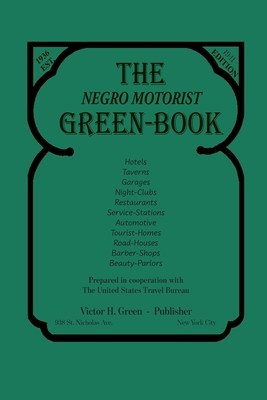
- Išsiųsime per 10–14 d.d.
- Autorius: Victor H Green
- Leidėjas: Martino Fine Books
- ISBN-10: 1684223741
- ISBN-13: 9781684223749
- Formatas: 15.6 x 23.4 x 0.3 cm, minkšti viršeliai
- Kalba: Anglų
- Extra -15 % nuolaida šiai knygai su kodu: ENG15
Atsiliepimai
Aprašymas
2019 Reprint of 1941 Edition. The Negro Motorist Green Book was an annual guidebook for African American road trippers. It was originated and published by African American, New York City mailman Victor Hugo Green from 1936 to 1966, during the era of Jim Crow laws, when open and often legally prescribed discrimination against African Americans especially and other non-whites was widespread. Although pervasive racial discrimination and poverty limited black car ownership, the emerging African American middle class bought automobiles as soon as they could, though they faced a variety of dangers and inconveniences along the road, from refusal of food and lodging to arbitrary arrest. In response, Green wrote his guide to services and places relatively friendly to African Americans, eventually expanding its coverage from the New York area to much of North America, as well as founding a travel agency.
Many Black Americans took to driving, in part to avoid segregation on public transportation. As the writer George Schuyler put it in 1930, "all Negroes who can do so purchase an automobile as soon as possible in order to be free of discomfort, discrimination, segregation and insult." Black Americans employed as athletes, entertainers, and salesmen also traveled frequently for work purposes.
Shortly after passage of the Civil Rights Act of 1964, which outlawed the types of racial discrimination that had made the Green Book necessary, publication ceased, and it fell into obscurity. There has been a revived interest in it in the early 21st century in connection with studies of black travel during the Jim Crow era.
EXTRA 15 % nuolaida su kodu: ENG15
Akcija baigiasi už 1d.01:48:53
Nuolaidos kodas galioja perkant nuo 10 €. Nuolaidos nesumuojamos.

- Autorius: Victor H Green
- Leidėjas: Martino Fine Books
- ISBN-10: 1684223741
- ISBN-13: 9781684223749
- Formatas: 15.6 x 23.4 x 0.3 cm, minkšti viršeliai
- Kalba: Anglų
2019 Reprint of 1941 Edition. The Negro Motorist Green Book was an annual guidebook for African American road trippers. It was originated and published by African American, New York City mailman Victor Hugo Green from 1936 to 1966, during the era of Jim Crow laws, when open and often legally prescribed discrimination against African Americans especially and other non-whites was widespread. Although pervasive racial discrimination and poverty limited black car ownership, the emerging African American middle class bought automobiles as soon as they could, though they faced a variety of dangers and inconveniences along the road, from refusal of food and lodging to arbitrary arrest. In response, Green wrote his guide to services and places relatively friendly to African Americans, eventually expanding its coverage from the New York area to much of North America, as well as founding a travel agency.
Many Black Americans took to driving, in part to avoid segregation on public transportation. As the writer George Schuyler put it in 1930, "all Negroes who can do so purchase an automobile as soon as possible in order to be free of discomfort, discrimination, segregation and insult." Black Americans employed as athletes, entertainers, and salesmen also traveled frequently for work purposes.
Shortly after passage of the Civil Rights Act of 1964, which outlawed the types of racial discrimination that had made the Green Book necessary, publication ceased, and it fell into obscurity. There has been a revived interest in it in the early 21st century in connection with studies of black travel during the Jim Crow era.




Atsiliepimai